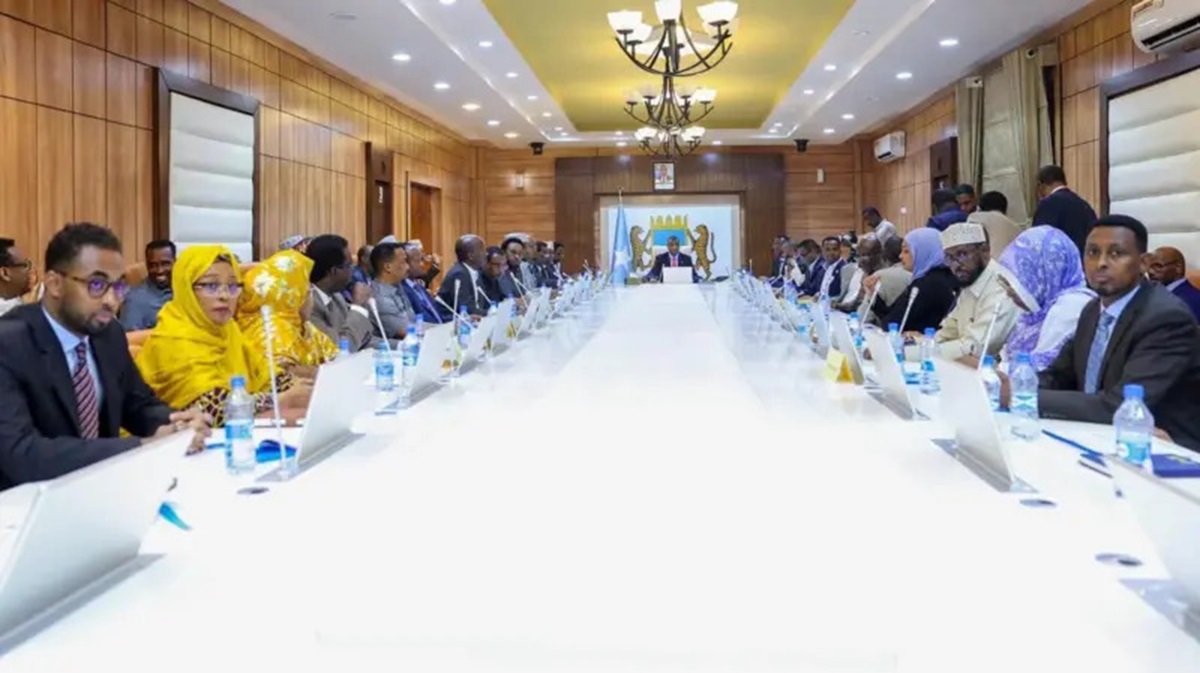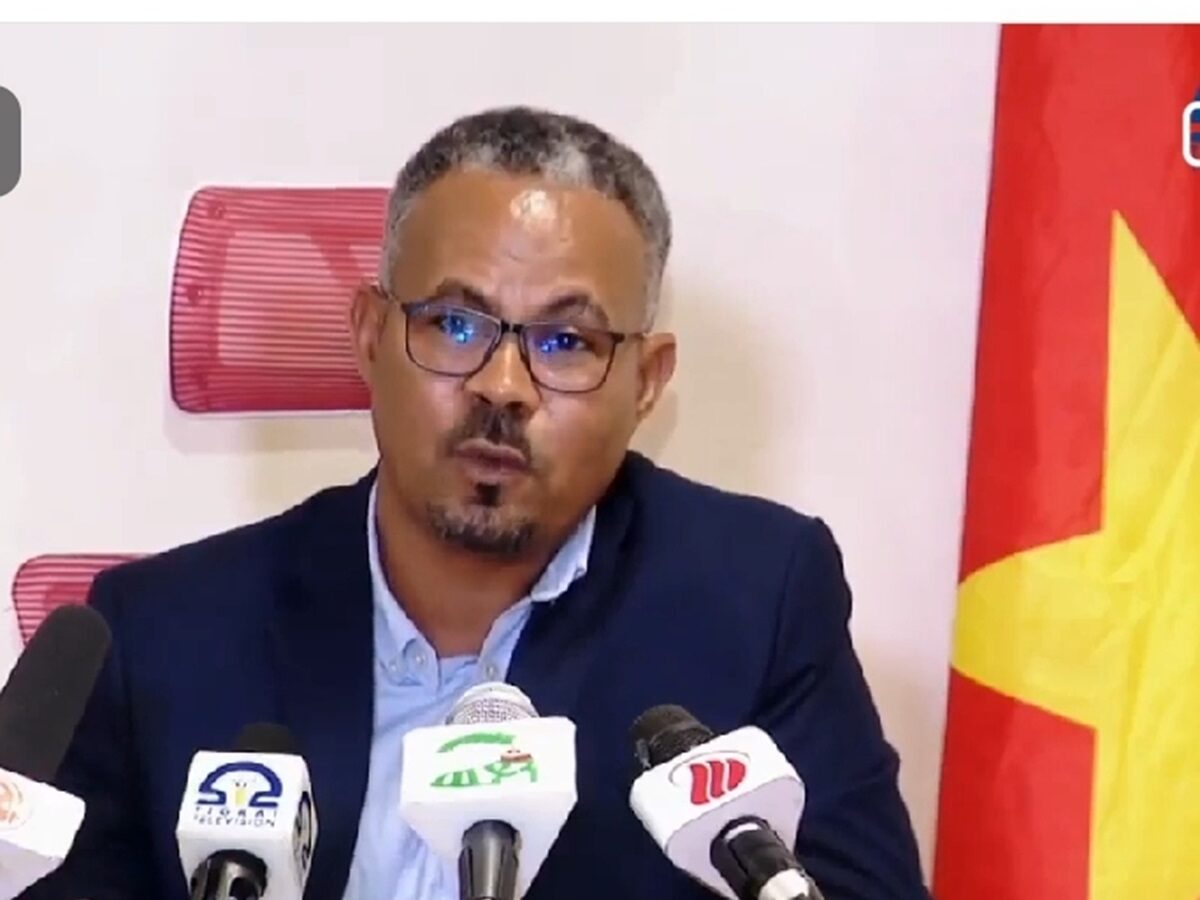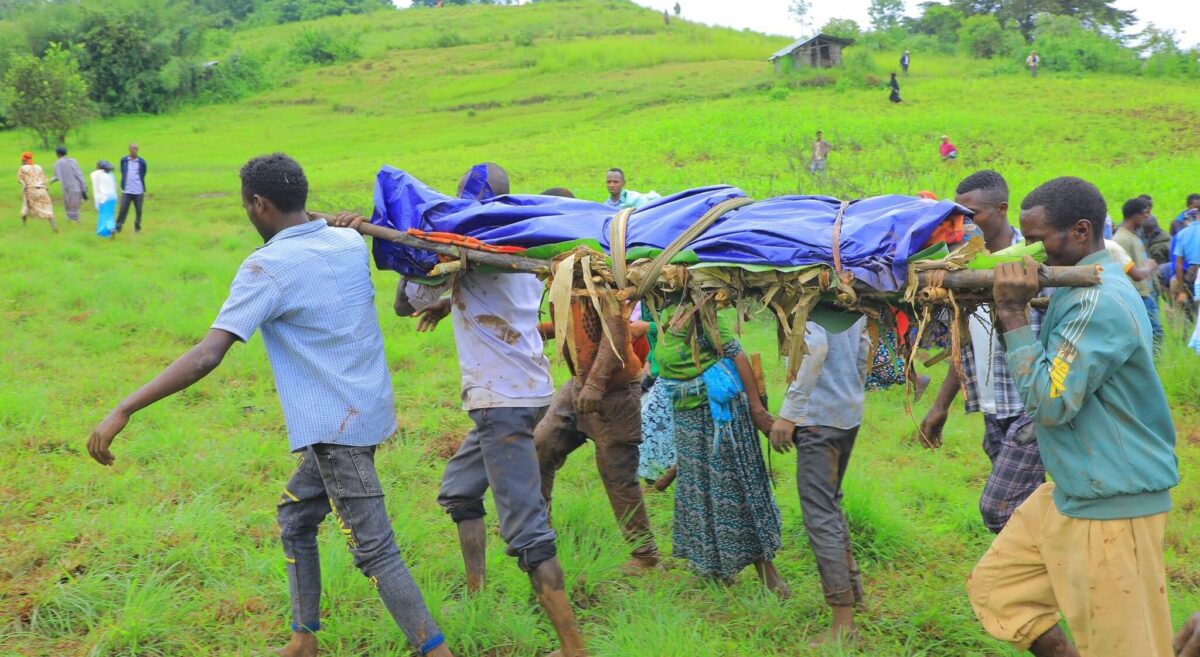Op-ed: Oromo and Amhara: The quest for transethnic solidarity and its discontents

Ezekiel Gebissa @egebissa
Addis Abeba – In Greater Ethiopia: The Evolution of a Multinational State, Donald Levine presents the Oromo and Amhara as two dominant ethnic groups who have taken turns in shaping Greater Ethiopia, a vast geographical region coterminous with the boundaries of the contemporary state. The Amhara extended their rule over much of Greater Ethiopia during the fourteenth and fifteenth centuries. The Oromo defeated the Amhara and established themselves as the dominant force in the same region over the next two centuries. Finally, in the mid-nineteenth century, the Amhara revived their empire and reclaimed their hegemony over Greater Ethiopia. Hence, Greater Ethiopia was a contested historical arena for centuries, with the Oromo and Amhara competing for prominence.
Levine examines the structures of Amhara and Oromo social systems to determine why either side won the contest in their own time. He describes Amhara society as “hierarchical individualist” (thesis) and the Oromo as ‘egalitarian collectivist” (anti-thesis) using a Hegelian framework. Despite portraying them as antagonists, Levine also argues that centuries of Oromo-Amhara interaction and amalgamation have produced widely shared panethnic cultural traits that could serve as the foundational building blocks for an Ethiopian “corporatist solidaristic” (synthesis) multiethnic national society.
The two major blocks in the Prosperity Party, the former Oromo People’s Democratic Organization (OPDO) and the Amhara National Democratic Movement (ANDM), advance divergent, even contradictory, interests that threaten to tear the country apart
Today the prospect of an Oromo-Amhara solidarity serving as the foundation for a peaceful and prosperous state of more than 100 million people is fading. The elites are presumed to hold radically different views about Ethiopia’s past and enunciate irreconcilable conceptualizations of national symbols, images, society, and the state. The two major blocks in the Prosperity Party, the former Oromo People’s Democratic Organization (OPDO) and the Amhara National Democratic Movement (ANDM), advance divergent, even contradictory, interests that threaten to tear the country apart. In this article, I examine the prospects for Oromo and Amhara cooperation in state building at three historical junctures in the last half-century. I begin with the 1974 Ethiopian revolution.
Was Synthesis Possible?
In 1974, according to Donald Levine, Ethiopia was made up of discreetly divided autonomous social systems held together by a national government established by a succession of centralizing monarchs. Nonetheless, these disparate social systems were closer to constituting a national society. In Levine’s view, the Ethiopian revolution that erupted that year created an opportunity for Ethiopians to rethink their state-building approach and reimagine a modern state that is fair and just and serves the interest of the entire population, not just a few dominant groups.
Levine hoped that the Amhara and Oromo would play a decisive role in this project. Only a decade earlier, however, in Wax and Gold: Tradition and Innovation in Ethiopian Culture, he had expressed doubts about the Amhara culture’s ability to transition to modernity, which in political language means democracy. He discovered that common Amhara everyday expressions and communication styles are characterized by equivocation, evasiveness, and imprecision by using the the poetry construction linguistic device called wax and gold as an allegorical representation of traditional Amhara culture, a window on Amhara worldview, attitude, style of communication and total way of life. According to Levine, the culture of ambiguity signified a disposition for secretiveness, deceptiveness, intrigue, and innuendo, traits that do not make for positive interaction with outsiders and for social transformation.
Ambiguity abounds in the Oromo language, as it is the case with all-natural languages. In Amhara culture, however, ambiguity is deployed for expressiveness, insinuation, and humor. Despite the relatively long period of interaction between Oromo and Amhara cultures, Oromo culture prefers univocality and precision to polysemous expressions. This signifies that Oromo political culture encourages honesty, directness, and precision.
Among the Amhara, the culture of ambiguity has a political function. The nobility used it to cloak secret intrigues to keep their position, the literati to maintain their elite status through the monopoly of esoteric knowledge, and peasants used it to protest exploitation by expressing their grievances surreptitiously. In egalitarian societies like the Oromo, where openness and transparency are valued, these methods serve no meaningful purpose. Therefore, there is no cultural imperative in Oromo society for deploying secrecy, dissembling, and deception. In the Oromo worldview, there is no esoteric knowledge that would give an advantage to anyone that is not available to everyone.
In both cultures, the use of ambiguity expresses attitudes towards authority. In Levine’s scheme, Amhara culture exhibits the motif that authority is indispensable for the wellbeing of society and worthy of un-remitting deference, obeisance and praise. This contrasts with the Oromo perception of authority where men with high status are not deferred to obsequiously or automatically, nor are they entitled to order anyone, even their own wives and children. This demonstrates that Oromo culture cultivates a perception that authority is collective rather than private.
Levine’s analysis reflects not only linguistic differentiation and attitudes towards authority but also contrasting value systems and social institutions. Individualistic, hierarchical, and competitive Amhara competing with the solidaristic, egalitarian, and socially-accommodating Oromo. The Amhara, Levine observed, were determined to have an empire, being so hierarchical and all, and their expansionist proclivities were frequently unleashed as a result of their desire to rule.
The commitment to empire necessitated flattening the diverse identities of the various Ethiopian peoples, including the Oromo, and rolling them into an ostensibly pan-Ethiopian blend that would ostensibly rise above its constituent parts. This approach to state-building did not result in national integration or the co-determination of common destiny. On the contrary, the effort to homogenize and failure to recognize the differences among Ethiopian peoples prevented a genuine synthesis from being forged. As a result, the synthesis Levine envisioned in 1974 was never realized.
Is Solidarity Possible?
In 1991, another turning point in Amhara-Oromo cooperation and co-authorship of an inclusive state occurred. For cooperation to exist, there must be two sides. At the time, there were concerns about who would represent and speak for the Amhara. The Amhara elite did not even acknowledge the existence of an Amhara ethnic group in the early 1990s. Some Amhara intellectuals argued that the Amhara identity represented multiple ethnicities with various ethnic consciousness rather than a distinct Amhara ethnic group.
A renowned linguist described the Amhara in 1994 as “a fused stock, a supra-ethnically conscious ethnic Ethiopians serving as the pot in which all the other ethnic groups are supposed to melt. … Amhara does not exist, in the sense of being a distinct ethnic group.” Others posited that it is inconceivable to imagine the Amharic language exists without a corresponding ethnic group speaking it as a mother tongue, rejecting the “no-ethnic Amhara” thesis. Therefore, as long as there is the Amharic language, they argued, the Amhara do exist as an ethnic group with a distinct territory and culture, just like any other ethnicity in Ethiopia.
In contrast to the elite sophistication of the urban Amhara, rural Amhara self-conception is straightforward: Amhara is their culture, way of life, and identity in the same way Oromo rural residents are self-conscious of their own
This debate was less about Amhara ethnicity and more about political positioning in the context of a national debate over restructuring the Ethiopian state. Those who asserted the existence of the Amhara as an ethnic group envisioned the Amhara participating in the country’s political life as a single nation without a special privilege attached to the Amhara identity. Those who rejected the existence of the Amhara as an ethnic group feared recognition of the distinction between the Amhara and other Ethiopian ethnic groups would undermine their thesis that the Amharic language had created an evolved Ethiopian identity from many assimilated ethnic groups. They insisted that reducing the Amhara to an ethnic group was tantamount to breaking apart the Ethiopian nation.
The position, though contrary to the principle of equality, has its genesis in Ethiopian history. According to the Russian scholar Sevir B. Chernetsov, those who deny existence of the Amhara as a distinct group were the urban, educated, assimilated Amhara, who view themselves as Amharic-speaking Ethiopians. In reality, says Chernestov, the rural Amhara have a different cultural self-consciousness than the urban Amhara. In contrast to the elite sophistication of the urban Amhara, rural Amhara self-conception is straightforward: Amhara is their culture, way of life, and identity in the same way Oromo rural residents are self-conscious of their own.
For Chernestov, the two groups share certain traits. Both speak Amharic, the vast majority profess Orthodox Christianity, and both are influenced to varying degrees by imperial court culture. In contemporary politics, the two distinct groups that evolved historically have developed different value systems, interests, political priorities and aspirations. However, when it comes to defining and defending Amhara’s interests and identities today, the two groups diverge.
In the early 1990s, the difference started to play out in the political arena. The urban Amhara, without any qualms or reservations, without considering the views of the rural folk, asserted their political views as the position of all Amhara. In 1992, the All Amhara People’s Organization was founded, signaling that the urban Amhara who claimed Ethiopian identity are the spokespersons of all Ethiopians who happened to speak Amharic. The Ethiopian People’s Democratic Movement named itself the Amhara National Democratic Movement (ANDM) and positioned itself as the official party representing the Amhara as single group. In fact, both AAPO and ANDM represent the interests of the de-territorialized Amhara elite, the self-styled champions of all nationalist Ethiopians, not those of the territorial rural Amhara.
In the same way that the rural Amhara voice was not heard, the court culture of domination, superiority, and authority is evident among the urban Amhara. They silence not only the rural Amhara but also other ethnic groups who opposed imperial court culture. The urban Amhara elite envisions a unified Ethiopian state in which all identities are deracinated, based on their claim to supra-ethnic Ethiopian identity. For three decades, the urban elite disdainfully dismissed multinational federalism, elevating their hegemonic, imperial, statist and exclusivist discourses to unquestionable goodness and universalist platitudes in which everyone should want to be included. In the context of Oromo and Amhara discourses, the claim to the universality and inherent goodness of Ethiopian patriotism portends the annihilation of the supposed particularity and inherent wickedness of Oromo ethnonationalism. This did not lead to a sense of solidarity built on a shared goal and for the common good.
The Moment It Seemed Possible
The last opportunity in Oromo-Amhara cooperation to transform Ethiopia for the better came in the twilight years of the Ethiopian People’s Revolutionary Democratic Front’s (EPRDF) rule. In the mid-2010s, the Oromo youth protest destabilized and delegitimized EPRDF’s authoritarian order. Leaders of the OPDO and ANDM seized the moment of popular discontent to end the Tigray People’s Liberation Front (TPLF)’s dominance that had marginalized and excluded them from the center of power and decision-making on fundamental issues such as national integration, resource allocation, and national security. Lemma Megerssa, the OPDO leader, and Gedu Andargachew, the ANDM leader, and their delegations met in Bahir Dar, the Amhara region’s capital, and apparently agreed to form a common front against the TPLF.
The common front was founded on common grievances. The OPDO rationalized that they were excluded from the center of power and decision-making, even though the Oromo people and their Oromo constituencies were central geographically, historically and demographically to the foundations of the polity. Appropriating the political language of Oromo nationalists, they championed the Oromo demand for self-rule and protested the portrayal of Oromo nationalists as anti-Ethiopian, secessionist, extremist, and narrow-minded. They denounced the perpetuation of the long-held stereotype of Oromo as outsiders in Ethiopian.
On their part, ANDM leaders complained about their characterization as violent chauvinists and proponents of the return of a unitary government. They seemed particularly incensed by the label presented as “dreamers of the return of the old order.” Moreover, they construed every action the TPLF took to elevate the hitherto marginalized nations as a deliberate effort to undermine the Amhara. In particular, the ANDM elite objected that they were pushed to the political margins despite their central contribution to the construction of the Ethiopian state and civilization.
The alliance, known as the Oromara, succeeded in ousting the TPLF from its dominant position in the EPRDF coalition. However, the alliance was not nurtured to grow to the “corporatist solidaristic” synthesis Levine described as “Greater Ethiopia.” Once the authoritarian order was removed, the alliance lost its reason for existence. Attempts were made to maintain the Oromara common front even after the ascendancy to federal power of OPDO-ANDM leaders. But once the common enemy vanished, no common purpose was left to hold them together. Consequently, Oromara fizzled out. A struggle for dominance ensued.
“The Oromara alliance eventuated in unprecedented violence”
The Oromara alliance eventuated in unprecedented violence. The Oromia Prosperity Party and the Amhara Prosperity Party mobilized the Ethiopian military and Amhara regional security forces, supported by the military and financial aid from Eritrea and the United Arab Emirates, and declared a total war on the Tigray regional state, which was governed by their avowed enemy, the TPLF, who brought them together in the first place. Their war has rendered Tigray a wasteland, devoid of its inhabitants and resources. The operation, which was carried out after all communications were cut off, has caused incalculable human and material tragedy in the region. In other regional states, similar violence occurs with impunity. The last four years of the Oromara rule have been marked by rampant intercommunal conflict, insecurity, displacement, political malaise, administrative paralysis, and the malfeasance of politicians. This appalling track record of political malpractice has raised the specter of a calamitous state collapse and national dissolution.
The Lost World
Levine’s vision of Greater Ethiopia as a synthesis was meant to operate based on the concept that a conflict of opposites is, in fact, a struggle between actual (thesis) and potential (antithesis) worlds. This would mean a democratic Ethiopia would be a realization of the potential world the Oromo antithesis represents. However, the current dominant discourse is not about realizing the ideals of Oromo cultural themes, including egalitarian ethos, communal solidarity, democratic structures, separation of power, and civility in deliberation. These values hold great possibilities to play a transformative part in any democratization endeavor in Ethiopia.
Ethiopian unity is deemed so sacred that it trumps any basic right to which an Ethiopian or a collective of Ethiopians are entitled.
Contrary to the aim of seeking realization the potential world, the contemporary discourse trumpets democratic ideals at the same time it rejects the right of people to self-determination and vows to annihilate those who demand it. Ethiopian unity is deemed so sacred that it trumps any basic right to which an Ethiopian or a collective of Ethiopians are entitled. The prevailing discourses have harkened to glorifying hegemonic, imperial, statist and exclusivist sermons embedded in a warmed-over chorus of national unity.
The idea of an Oromo-Amhara alliance is exclusivist and undemocratic. It must be discarded and replaced by the solidarity of nations and collective politics in which only people and ideas matter. Only such a solidarity can overcome the present challenges and create opportunities for a more positive future. Only such a synthesis can provide the framework to channel shared grievances to positive freedom to choose to live in dignity and negative freedom from people on people horizontal violence, want, deprivation, and human degradation. These are not Oromo values. These are not Amhara values. These are human values. Sadly, in Ethiopia today, the value of this fundamental truth has been rendered secondary to the imperative of saving a polity humans created. AS
__________________________________________________________________________//__________________________________________________________

Editor’s note: Ezekiel Gebissa is a Professor of History and African Studies at Kettering University in Flint, Michigan. He can be reached at: egebissa@kettering.edu

The first version of this op-ed was published in the November 2022 print edition of Addis Standard magazine.








